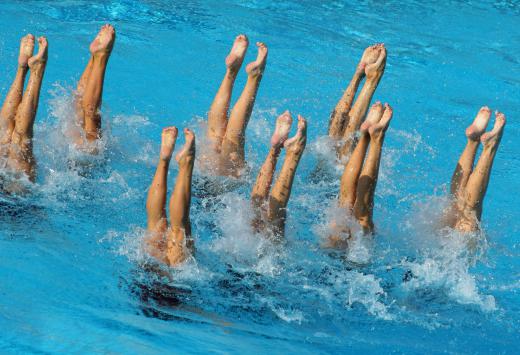There are various sports that involve the use of a pool, and many of them are quite competitive. Most swimming sports incorporate the basics of swimming with some other aspect, requiring participants to follow different rules, or make certain movements while in the pool. Some of the most popular types of swimming sports include water polo, swimming, diving, and synchronized swimming. All of these swimming sports are included in the Olympic Games.
Water polo is a team sport, in which seven members from each team are in the pool at one time with the objective of scoring the highest number of goals. One member from each team is designated a goalkeeper, and all members wear swimming caps. The ball is usually yellow, and somewhat resembles a soccer ball. This is one of the swimming sports that requires players to swim the majority of the time, even if just treading water, as only goalkeepers can stand in the shallow area of the pool. Players should have good stamina, strong swimming skills, superior reflexes, and be observant.

Swimming is often the first sport that is thought of when considering athletics involving water. The typical swimming competition includes the backstroke, front crawl, breaststroke, or butterfly, and competitors have the option of using all or only one type during the race. The point of swimming competitions is to have the fastest time among participants. The typical equipment for this and similar swimming sports includes a swim cap, swimsuit, and goggles.

Diving involves using a raised platform to enter the water gracefully, often including some types of flips or acrobatic movements. In competition, divers usually need to include a specific number of flips and twists, but other aspects of judgment include how well their body adheres to the move while in the air, and also how they enter the water. Diving boards are usually set at a few different heights depending on the competition. Synchronized diving is a derivative of regular diving, and includes two people who dive at the same time.

Synchronized swimming involves two or more people swimming at the same time, performing routines that include dance moves while music plays. This is unique from other swimming sports in that most synchronized routines involve swimmers lifting teammates out of the water, and even throwing them as they perform acrobatics in the air. Synchronized swimmers usually need to be graceful, flexible, and strong enough to get through the typical routines.
